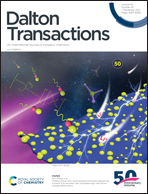Immobilizing CsPbBr3 perovskite nanocrystals on nanoporous carbon powder for visible-light-driven CO2 photoreduction†
Abstract
Perovskite CsPbBr3 nanocrystals (NCs) have emerged as promising candidates for the photocatalytic reduction of CO2. However, the CO2 conversion efficiency of pristine CsPbBr3 is still unsatisfactory, mainly due to severe radiative recombination, poor stability and low CO2 capturing ability. Coincidentally, nanoporous carbon powder (NCP) has received tremendous attention for environmental remediation and renewable energy production. Herein, by immobilizing CsPbBr3 NCs into the pores of NCP, a CsPbBr3/NCP hybrid has been successfully constructed for the first time, which combined the advantages of CsPbBr3 NCs and NCP. In comparison with pristine CsPbBr3, the resultant hybrid photocatalyst exhibited much superior photocatalytic performance in CO2 reduction, which could be attributed to the enhanced electron extraction and transfer between CsPbBr3 NCs and NCP, higher CO2 capturing ability and more active sites for CO2 activation. Furthermore, the nanohybrid displayed remarkable reusability in photocatalytic CO2 reduction. This study is anticipated to provide a new pathway for the design and fabrication of high-performance photocatalysts based on perovskites for solar-energy-conversion applications.



 Please wait while we load your content...
Please wait while we load your content...